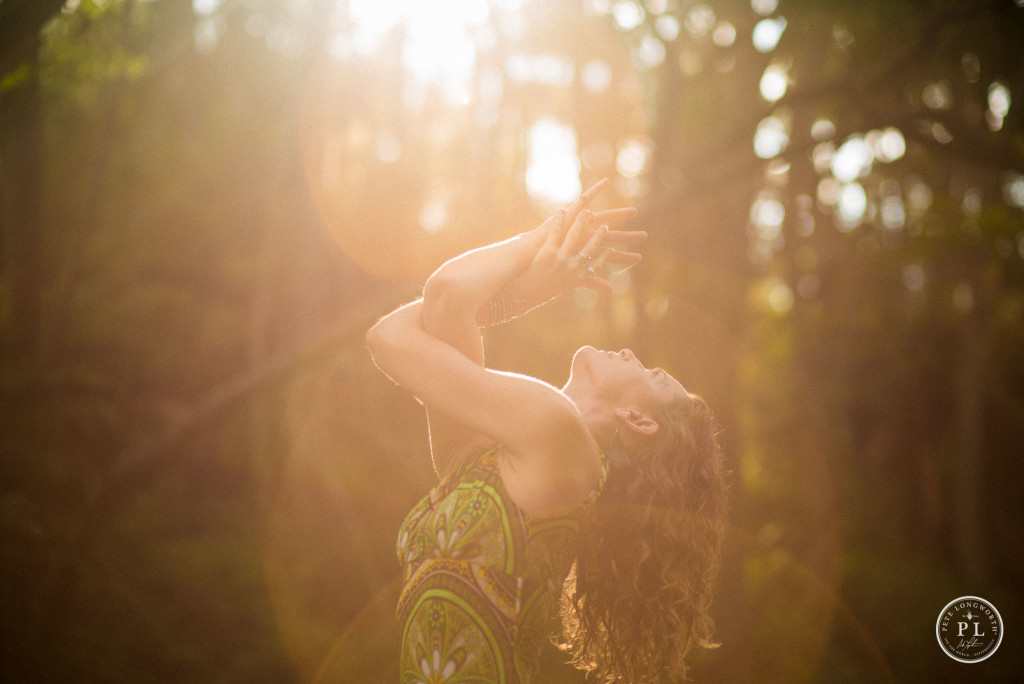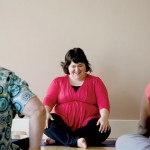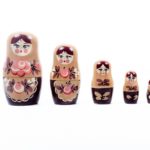 An example of tuning into prana vayu, the upward flow of Prana. Photo Credit: Pete Longworth
An example of tuning into prana vayu, the upward flow of Prana. Photo Credit: Pete Longworthby Kara-Leah Grant
On Friday, a friend who is a talented healer, did some energy release work on my shoulders.
He stood behind me, pressed into each shoulder and breathed. It was a simple technique and yet I could feel pressure evaporating into the ether.
Afterwards he shook his head.
You had half a ton of pressure in there.
I know this. I feel it and I see it in my body when I watch myself on video – this held tension that isn’t so much about the muscles but the underlying energy.
This morning, two days later, I went up into Wheel Pose and was shocked to feel open and free in the shoulders. There was almost a sense of joy instead of the usual contraction and stuck sensation. I’ve done no yoga since the last time I did Wheel Pose, three days ago. Yet the posture has freed enormously.
Why? I can’t know for sure, but it may be because of the work that my friend did on me releasing energy out of the shoulders.
It reminds me of a David Frawley quote:
To change something we must alter the energy which creates it.
This is the essence of our yoga practice. It may seem that we’re working on the physical body, lengthening our muscles and stretching everything out, but we’re also working on the subtle body – our energetic body.
Further adding complexity is the relationship our psyche has to our subtle body.
In fact Jung said:
I have often felt tempted to advise my patients to conceive of the psyche as a subtle body.
Jung defines the subtle body as:
The somatic unconscious, a transcendental concept involving the relationship between mind and body.
This is my experiential understanding of the psyche – it is the subtle body and the subtle body creates the physical body.
Anodea Judith explores this idea in her book Eastern Body Western Mind Psychology and the Chakra System as a Path to the Self. She uses the lens of the chakras to examine our chronic holding patterns and how they become body armour – essentially shaping the way we hold and present our physical selves to the world.
Judith references the character structure work of Alexander Rowan, whose work was based on that of Wilhelm Riech. She further maps other theories of human development against the chakras ,including Freud, Piaget, Erikson, Maslow, Wilber and Kohlberg.
It’s a fascinating study that shows how as we develop as children, our psyches are more vulnerable at different ages and stages of development to different wounds, and how those wounds relate to the chakras and the ways in which we armour ourselves against the world.
Which brings us right back around to Yoga as a Journey of the Self through the Self to the Self, as described in The Bhagavad Gita. Through working with our body and breath we begin to unlock the unconscious and heal old wounds which keep our bodies in particular shapes.
We humans like to visualise concept maps to understand our experiential existence and The Upanishads are full of different conceptual maps for our existence, like that of the Koshas, which shows up in both The Taittiriya Upanishad and The Mandukya Upanishad.
The Mandukya Upanishad also tells us:
Consciousness has nineteen mouths through which it eats the food of objective experience.
I love that sentence. Take time to read it again and savour what it brings to mind. Consciousness has nineteen mouths through which it eats the food of objective experience.
We are consciousness of course, and it is we who have nineteen ports of entry – 19 ways of picking up information, 19 doors of perception – through which we discern our material experience.
What are those nineteen mouths?
First there are the five senses of knowledge – that which brings the outside world to us, jnana indriyas. You know these five senses well: Sight, Sound, Touch, Taste and Smell.
There are also the five organs of action, karma indriyas : hands, feet, mouth (speech), the generative organ (reproductive genitals) and the excretory organs. The five organs act (for example our hands grasp something, or we say something) yet no new knowledge is gained.
Everything we know about the outside world comes through the jnana indrayas yet the karma indriyas are necessary to supply that information. We need to use our hands to pick up the food we’re going to taste.
We’re all familiar with these first ten mouths which provide us with information about our objective experience.
Now we move on to the more subtle sensory mouths – those which our practice of yoga will often begin to make us aware of.
The five vayus or winds are next – the five movements of Prana. Most of us our familiar with the concept of Prana as the living force that animates all within the Universe. This Prana has five main ways of operating within us: prana, apana, vyana, udana and samana.
Each of these ways of operating has a natural way of moving, a seat in the body, an elemental connection and a chakra connection.
Knowledge of the five vayus can deepen our understanding of our yoga practice as we learn to discern the flow of energy around the body and can tell where energy is blocked or not flowing.
For example, it’s possible to see in some students that Apana Vayu is weak – this is the downward movement of prana which has it’s seat in the core of the pelvis and is governed by the earth element and Muladhara Chakra. This weakness will have specific symptoms in the subtle body and in the physical body. There are also specific practices which can be done to strengthen it’s flow.
Understand the five vayus and your understanding of yoga will multiply.
Finally there are the four functions of the psychic organ – the mind.
Yes, even your mind is further divided into four different aspects of ways of being:
Manas is ordinary, indeterminate thinking – just being aware that something is there. That is the work of the mind; that is manas.
Buddhi determines, decides and logically comes to the conclusion that something is such and such a thing. That is another aspect of the operation of the psyche – buddhi, or intellect.
The third form of the mind is ego, ahamkara, affirmation, assertion. “I know that there is some object in front of me and I also know that I know. I know that I am existing as this so-and-so.” This kind of affirmation attributed to one’s own individuality is the work of ahamkara, known as egoism.
The subsconscious action, memory, etc., are called the chitta, which is the fourth function.
Thus, manas, buddhi, ahamkara and chitta are the four basic functions of the internal organ, the psychological organ. ~ Swami Kishnananda
These kinds of conceptual models show up throughout all yoga literature – Three Gunas, Four States of Consciousness, Five Koshas, Seven Chakras, Eight Limbs, Nine Obstacles and on they go.
It’s easy to dismiss these concepts as abstract or irrelevant to our modern lives. Yet as we continue on with our yoga practice we will hit up against experiences of our own which require further study. Going deeper we learn that we can make sense and understand our experience through a conceptual model conceived of more than two thousand years ago. This gives a sense of the universality of our human experience across cultures and time.
Plus once we understand that yoga is about far more than stretching and lengthening muscles we can use it to it’s full benefit. We can use our practice to balance our anxiety, or work with our depression.
Then we understand why an energetic release through the shoulders has opened up a physical posture with ease, when all the practice of that posture over the last six months had failed to do so.
As teachers, greater understanding of the underlying energetic nature of asana practices helps us to work more skilfully with our students. We can ‘see’ their psyches manifesting in their bodies and understand what kind of guidance is required beyond the physical.
Because yoga isn’t about doing the perfect Wheel Pose – it’s a path to self-realisation or liberation. It’s a way to wake up and cease identification with our minds and our bodies. Practicing Wheel is a tool on this journey because it provides us with an opportunity to observe our body and mind in action and see where we’re stuck or how we relate to and work with stress and discomfort.
This is where the yoga lies.
Not in the posture itself.
But in our relationship to the posture – the energy which is creating it.
Of course, our relationship to our postures mirrors our relationship to the entire world and this is where we find Ourselves. This is where we live – we are relational beings. Without other beings and a world to relate to, we wouldn’t exist at all.
Watch how you relate to your family, your lover, your friends, your cat, your body, your car, your local beach… watch that and you see yourself.
You are not who you believe yourself to be.
You are yourself in action, in relationship.
It is through awareness of your own relating that you wake up.
Thus, going deep in a yoga practice is not how far you melt into a forward fold but how deeply you are aware of your relationship to the posture until you melt into your experience, observer and object becoming one until there is no distinction between you and the world.
Now you’re Awake. You’ve gone so deep, you’ve finally surfaced.


Great post Kara-Leah. I think I’m wondering if I’ve found the answer to why I stop and start yoga so much with this post.
I am the most inflexible person on this earth. I know yoga is what I need to do,s o I start then I stop, its hard and I just get to a level that I start to feel slightly more bendy, then I self sabotage and stop again. For long periods of time. I have recently discovered yin yoga and have been loving it! Finally I’ve found the yoga that works for me. Maybe I need to do some yin and then that will give me a little more stretch for other kinds. I’m feeling its benefits already.
However this week, I have been to two classes and I felt my body stretched way more than I’d ever been able to before – in a good way, I’m not injured. but Oh my goodness, after the second class of the week, I woke up so sore and stiff and feeling unwell – and yet not unwell (if that makes sense) I’m convinced that I’ve released something and that is what I’ve been avoiding for the whole of my life. Anyway, I’ve listed to my body and just rested with maybe a few gentle stretches and am curious to get back to class and see what happens. I’d be interested in your thoughts on this – is this possible or did I just have some random and coincidental virus?
Hey Shelley,
I don’t have any answers really. I’ve noticed in my own practice that the times when I stop seem to be when I need the Yoga the most, or when I’m beginning to peel back a new layer which can feel subconsciously fearful or difficult. Sometimes the story about what something is, or why something happens isn’t even needed. We are where we are.